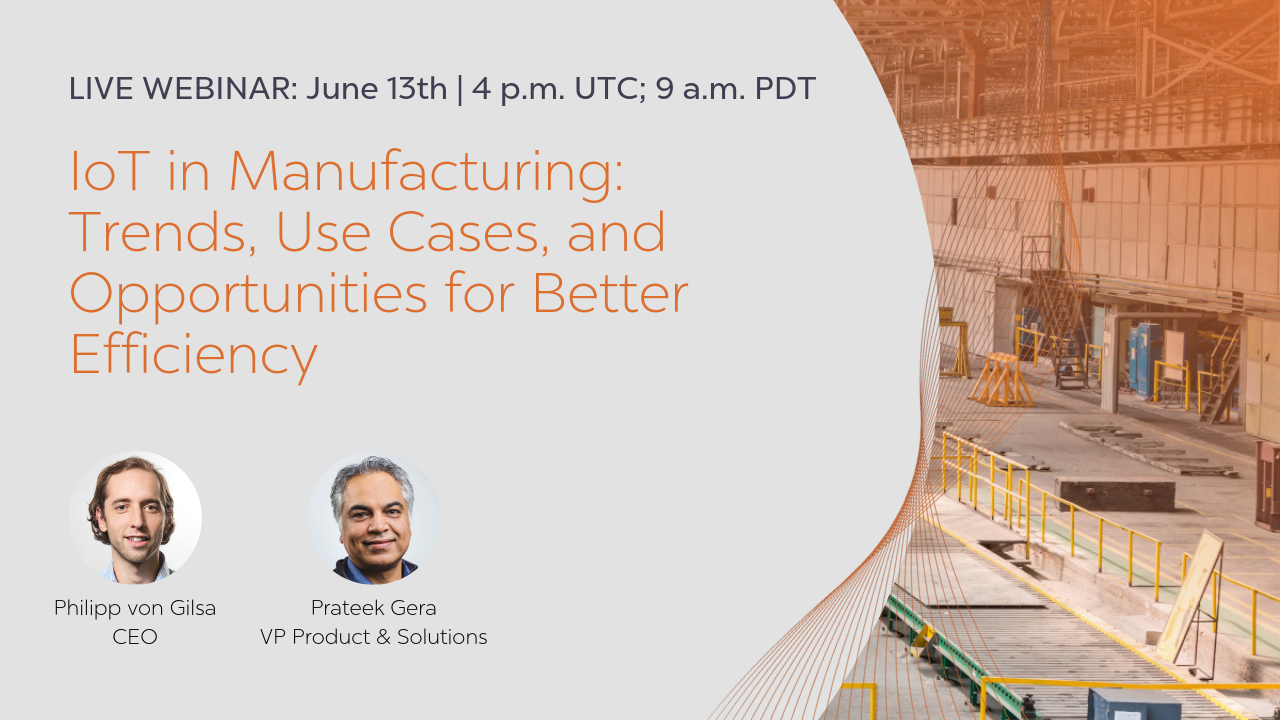It’s understandable if you learn to tune out certain buzzwords and phrases that get repeated over and over in business and management guides. We all have enough of “synergy” and “thinking outside the box”, don’t we? After the millionth time you hear about it, you no longer really care if it’s something you should pay attention to.
If you’re starting to do this with any combination of “IoT”, “digital transformation”, “digital twins” and “Industry 4.0”, I’m here to tell you that you’re making a mistake. These are not empty catchphrases or clichés, they’re real concepts that define the fundamental organizing principles of any manufacturing operation that hopes to be successful in today’s marketplace.
IoT-based visibility gives insights into every link in production and supply chains. Assets and workstations can communicate constantly via online networks. Machines, systems, and products exchange information in an omni-directional conversation that enables fine tuning and optimization to a level never before possible. This efficiency means leaner production and lower costs.
We’re witnessing a transformation that is reshaping the way factories work. The changes are powered by the potential unleashed by the digitization of processes and the deep insights gained through machine-level analysis. If your operation hasn’t already at least started down this road, you’re already behind.
Time for a Digital Twin
The information collected through IoT in manufacturing is easily gathered, stored, interpreted and displayed in real time. You can use this information to make better decisions regarding the allocation of financial and personnel resources, track the position and use of physical assets, get more precise and reliable information about employee work time and more. You can track the performance of any connected component of your operation by following its digital twin.
A digital twin is a virtual replica of a physical device or a network of devices that mirrors its real-world counterparts in real time. Data from machines and other assets is reflected in the digital version, their twins, in a way that makes it simple to follow and turn into business benefits. Tracking a digital twin is more informative and easier than observing a physical twin and can be done remotely. With everything integrated into a single interface, opportunities for improvement can be identified much more quickly.
The transparency provided by IoT solutions increases efficiency in production by making it easier to adapt to fluctuations in demand and enabling smarter inventory management. Bottlenecks in workflows can be identified and assets and can be better managed and more quickly located. When information is shared throughout a network, multiple shareholders can access it as needed without waiting for gatekeepers or processes to catch up.
Deeper real-time insight also means that potential issues can be identified and resolved before they become serious. With conventional, pre-IoT monitoring, problems show up on the radar after they’ve become, well, problems. That’s when you’re looking at production stoppages, open-ended downtime and maintenance issues. Machine-level analytics and access to historical data can quickly flag incidents and out-of-normal-range performance and provide early warnings about potential problems before they get out of hand. The value of keeping production running smoothly in this manner alone can exceed the entire cost of IoT implementation, with everything else just like nice digital cherries on top.
The Tools for the Factory of the Future are Available Now, What’s Stopping you?
Getting your facility positioned to operate on the cutting edge of technology is a matter of the smart use and integration of analytical and data-gathering tools available right now. Still, not everyone is as far along as they should be when it comes to their own move towards fully connected manufacturing operations. Surveys indicate that about a quarter of manufacturers have yet to formulate a plan to push their digital transformation forward. It’s hard to say exactly why something so important is still not a mission-critical priority for so many decision makers, but identifying what they’re missing out on is easy.
Industry 4.0 is defined by the application of online capabilities to conventional manufacturing processes. With machines and other assets that can interact with each other and share information about their performance, benefits flow directly to every aspect of the operation.
Reduced costs, increased automation, higher throughput, more informed decisions—all this and more is what IoT brings to manufacturing, even at this early stage in Industry 4.0. Getting started is as easy as talking to a solution provider like us.
If you’re curious to learn more about manufacturing use cases for IoT, join our webinar on this very subject and dive a little deeper into the specifics of how digital solutions are supporting manufacturers in new ways every day. Just click here.
